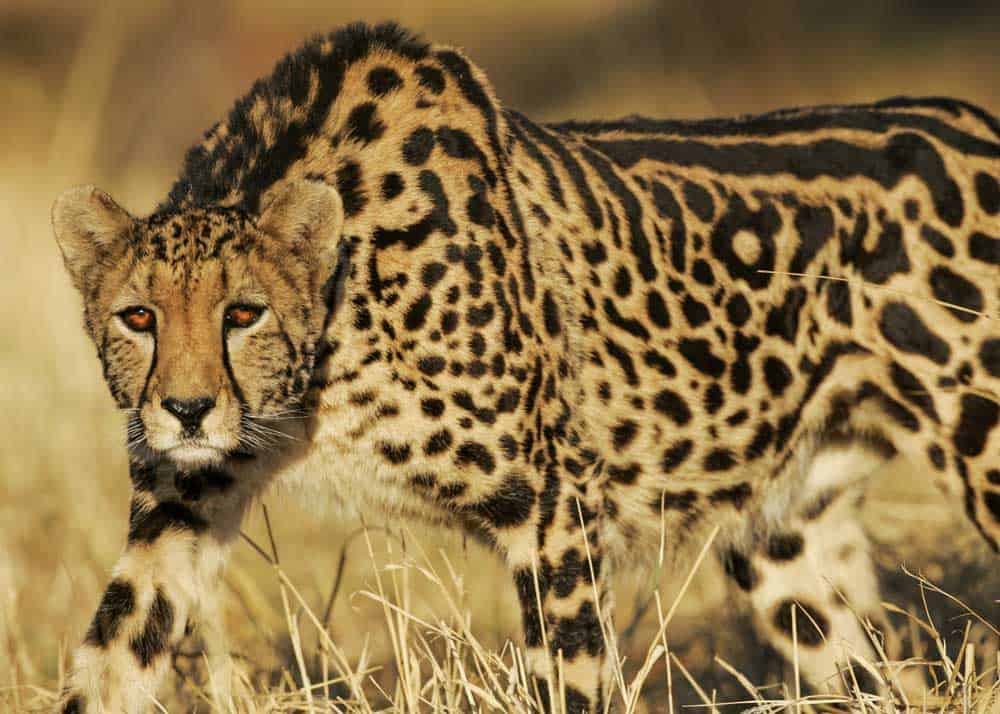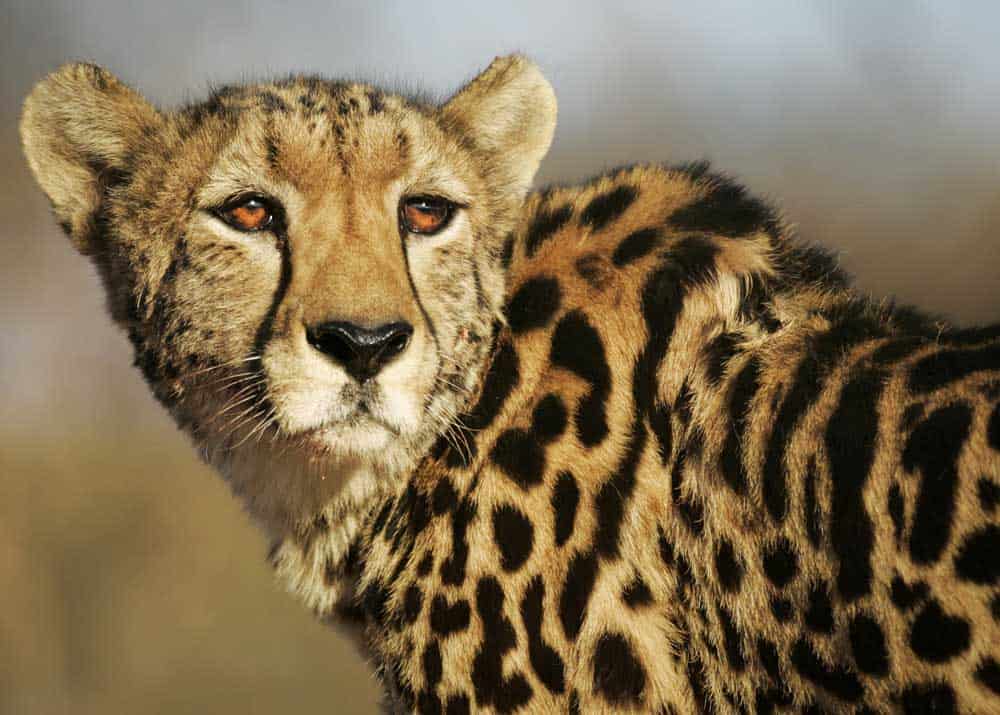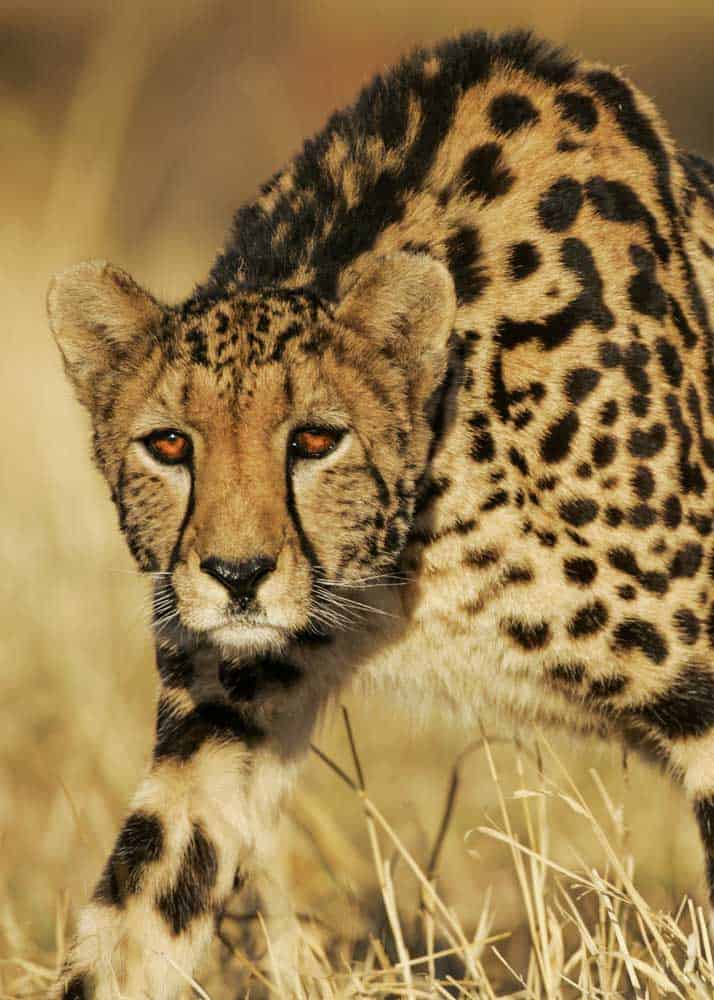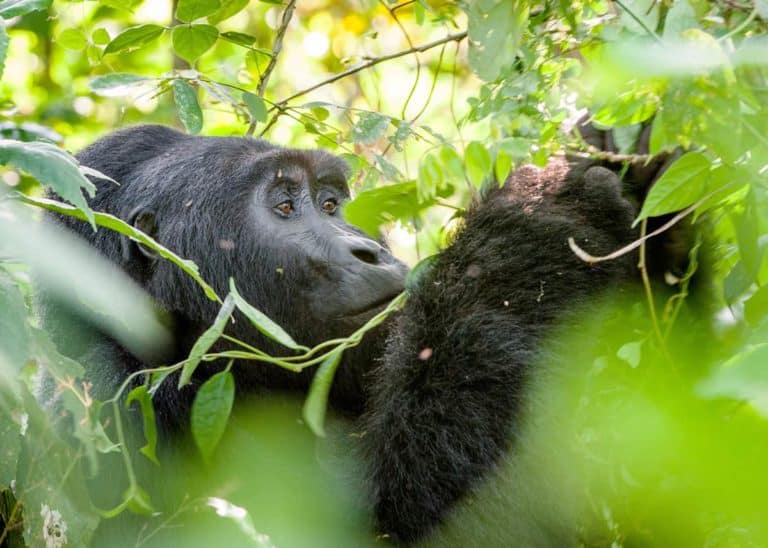21 King Cheetah Facts (King Cheetah vs Cheetah) Fur, Photos, Speed
With its sharp eyes and distinctively feline grace, the king cheetah is one of the most beautiful animals in the world. It’s also one of the rarest! Here’s what we know about king cheetahs – including fur, speed, range, mutations, and photos.

What is a king cheetah?
The king cheetah is a cheetah with a visible fur mutation. King cheetahs are not a unique species or subspecies of the cheetah.
Back in 1927, they were designated as Acinonyx rex (king cheetah) – a new species. Later in 1939, this proposal was removed because of a lack of data to support them as a new species.
What is the difference between a cheetah and a king cheetah?
King cheetahs are exactly like regular cheetahs except for mutations in their fur patterns.
Rather than small black dots all over their bodies, they have large, dark splotches in irregular patterns. They also have three distinct black stripes going down their backs in vertical lines.
Is the fur pattern mutation hereditary?
Yes. The fur patterns of a king cheetah come from a recessive allele that must be passed down from both parents in order for the same traits to manifest in their cubs. In other words, the mutation doesn’t just appear out of nowhere; it’s genetic.
Another fun fact about the allele is that it can skip generations or show up in some cubs but not others. Do you remember learning about Punnet squares in school?
Here are the basics of how recessive genetics work.

Let’s say that regular fur is BB and mutated fur is Bb or bb. If a pair of Bb cheetahs have cubs, only a quarter of them will be king cheetahs. If a pair of bb cheetahs have cubs, all of them could be.
Who said that you’d never use punnet squares in real life, huh?
How many king cheetahs are left in the world?
King cheetahs are incredibly rare. It’s estimated that there could be as few as 10 left in the wild.
There are only about 30 – 50 in the entire world, and most of those are in protected parks and wildlife reservations.
King Cheetah Habitat
Just like regular cheetahs, king cheetahs live in wide, grassy plains and flatlands.
These are usually but not always hot and arid environments like savannas and deserts. They’re unlike a lot of animals that require cover to hide from predators. The king cheetah is the predator, so they live out in the open.
King Cheetah vs Cheetah: Primary Difference
The king cheetah is identical to the regular cheetah except for its fur.
We didn’t know this for a long time, though. We used to think that they were a separate species. Since explorers would only rarely glimpse them in the wild, they’d go home telling tales about strange, exotic creatures that they thought were crosses between leopards and hyenas.

More reading: How to Choose the Best Camera for Safari
Where do king cheetahs live?
King cheetahs are native to Africa. However, they’ve been exported all over the world to national parks and wildlife sanctuaries.
Are king cheetahs endangered?
Yes. While not officially tracked by groups like the IUCN (because they aren’t a species), king cheetahs are considered endangered. There are less than 50 remaining in the world, and they’ve only been sporadically spotted in the wild. Sightings have been made in Zimbabwe, Botswana, and South Africa.
Today, most king cheetahs live in protected habitats. They tend to make the news whenever they successfully breed. This has happened at the Ann van Dyk Cheetah Centre (previously De Wildt Cheetah and Wildlife Centre) in South Africa and the Lionshare Educational Organization Zoological Conservation Center in the United States.
What do king cheetahs eat?
King cheetahs are carnivores that hunt for medium-sized prey like gazelles, antelopes, and impalas. They’ll also go after young animals like wildebeest calves before they grow too large.
How often does a king cheetah feed?
Cheetahs eat an average of 6.2 pounds of meat per day. This is just an average, however, and they don’t always feed on a regular schedule. Cheetahs can go for several days without eating and even longer without drinking, so a good blackbuck might tide them over for a while before they need to hunt again.
How does a king cheetah catch its prey?
King cheetahs are very direct in their hunting habits. Rather than being ambush predators that attack by stealth, they simply find and chase their prey until it tires.
Since cheetahs are the fastest land animals in the world, they don’t need to be so sneaky.
How dangerous is the king cheetah? Is it an aggressive species?
Cheetahs can be quite dangerous for a number of reasons:
- They’re deadly predators. Cheetahs can reach speeds of 55 to 60 miles per hour while hunting, and once they catch their prey, they bite on its neck and strangle it for five minutes or more. They can even reach speeds of over 70 mph. Learn more about how fast a cheetah can run.
- They’re capable of coordination. Cheetahs are solitary creatures by nature, but moms can come together to protect their cubs, and males have been observed forming small “coalitions” of brothers and cousins. They hunt as a pack and share their kills.
- They’re very territorial. Don’t wander into cheetah land!
Will a king cheetah attack a human?
There are no records of cheetahs killing humans. This includes both regular cheetahs and king cheetahs. Just don’t get any ideas about petting one.
How big is a king cheetah? How much do they weigh?
Cheetahs are 3 – 5 feet long and 2 – 3 feet high. They can weigh anywhere from 80 – 140 pounds. Males are usually larger than females.
What does a king cheetah look like?
King cheetahs are known for their unusual markings. In fact, it’s the only way to distinguish them from regular cheetahs. They have large, irregular blotches on their fur rather than small black dots, and they have three vertical stripes that run down their backs from head to tail.
Other than that, king cheetahs look just like their brethren. They have thick, cream-colored fur and slim and supple bodies that are built for running. They’re good at maneuvering, too, thanks to their flat paw pads and non-retractable claws.
Here’s another fun fact about cheetahs: They have oversized organs to help them reach such high speeds. Their hearts and lungs have greater capacities for pumping blood and delivering oxygen throughout their bodies.
What’s the lifespan of the king cheetah?
Cheetahs can live around 15 – 20 years in captivity. Their lifespans are much lower in the wild.
What do you call a group of cheetahs? How large are these groups?
A group of cheetahs is called a “coalition.” They tend to be small since cheetahs are solitary creatures by nature.
They might consist of pregnant or nursing females who have banded together for safety, or they might be a group of young, unattached males who hunt and defend territory together.
Where can I see a king cheetah?
South Africa. While you might spot one in the wild, the best place to find king cheetahs is in South Africa. There are numerous centers that house, protect, and even breed them. You can see cheetahs at the Ann van Dyk Cheetah Centre (previously known as De Wildt Cheetah and Wildlife Centre).
Here’s a great travel video by Flying the Nest shot while visiting the Ann van Dyk Cheetah Centre in South Africa.
How often do king cheetahs give birth? What’s the process like?
Once they reach maturity, female cheetahs can give birth every couple of years. They go into heats that make them attractive to males, and males will fight each other for access to the females.
Cubs usually come in a litter of 3 – 5 at a time. They’re highly vulnerable to predators when they’re young, so mom will protect them by hiding them in bushes, moving them every few days, and never ranging far to find food.
Baby cheetahs often have “mohawks,” and it appears to help them avoid detection. They look more like honey badgers than cheetahs when their fur sticks up like that!
What threats face the king cheetah?
The biggest threat to cheetahs is humans.
Between poachers that treat them like prizes and developers that turn their natural habitats into shopping malls, cheetahs are having a hard time in the wild.
They’re considered “vulnerable” by the IUCN, and it’s estimated that they’ve lost more than 90 percent of their hunting range worldwide.
Do king cheetah have any significance in African culture or history?
Cheetahs have great significance in African culture. They’ve been viewed as everything from vital, powerful spirits to omens of death and symbols of the afterlife. Additionally, their pelts, claws, bones and teeth have been used in countless rituals and medicines.
King cheetahs have less myths and legends because of their rarity, but they did get the name nsuifisi when it was still believed that they were a cross between leopards and hyenas.
King cheetahs are also known as Cooper’s Cheetah, and (incorrectly) Acinonyx rex.

More reading: Cheetah vs Leopard: 14 Key Differences and Jaguar vs Cheetah
A Rare and Precious Beast
Did you learn anything from these king cheetah facts? One of the first steps in helping an endangered animal is educating yourself about why they’re important. Hopefully, you have a whole new appreciation for these elegant but endangered cheetahs!







Hello Sir , I’m from India where Cheetah became extinct in 1948 . In fact the word Cheetah is of Indian origin.
I would like to know if there are any records of Asiatic King Cheetah
@Shatner Mohanty, that is sad that they are extinct in india
Hi Bryan
I had the privilege to hold the first king cheetah cub that was introduced in the Pretoria Zoo with Ann van Dyk, Dr Willie Labuschagne (at that time the Director) when the foto was taken for The Times and newspapers. I was at that time the 1st Secretary of “The Friends of the Zoo. ” that dr Willie started with the adoption of animals of the Zoo where one could then go and visit buy the food and donate money to the Zoo for that animal.
Very exciting times that was.
That’s so nice. I would love to see the photo. Please share a link to it if you have one.
Thanks for sharing your experience!
Bryan